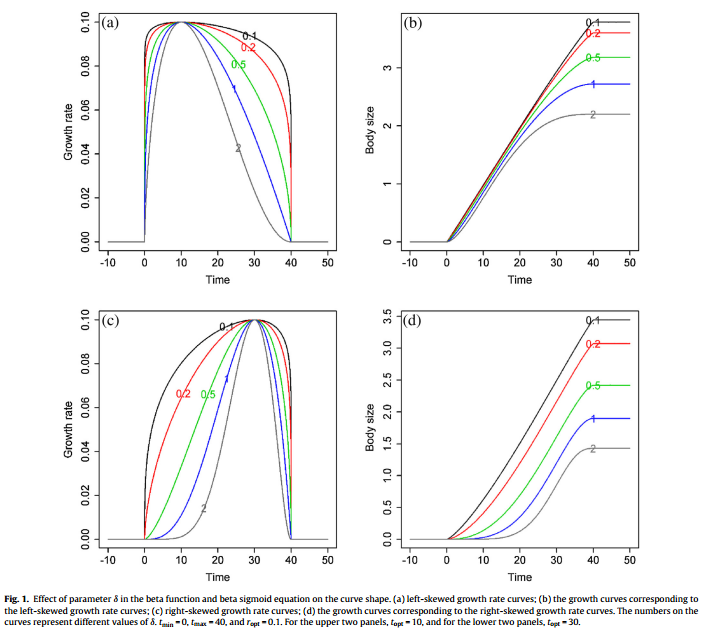Ontogenetic growth reflects the changes of biomass, height (or body length) of a biological organism as a function of time. Many growth equations have been built but few can accurately predict the ending time of growth.
Professor Huang Jianguo (correspondence, Forest Ecology and Simulation Research Group, South China Botanical Garden, Chinese Academy of Sciences) and co-operators attempted to provide two growth equations for predicting the time when growth terminates. Meanwhile, these models are also expected to apply to different growth patterns of different biological organisms. They obtained the growth equations by integrating two time-dependent growth equations which were obtained by replacing temperature with time in two non-linear mathematical models that describe the temperature-dependent developmental and growth rates of poikilotherms. Both of the two non-linear mathematical models can generate a skewed or symmetrical bell-shaped curve. In their research, dry weight data of six species of agricultural crops, height data of four bamboo species, tree-ring width data of two coniferous species and fresh weight data of 16 animals were used to fit these growth equations. Both growth equations agree well with the actual growth data of animals and plants. Additionally, one equation exhibits wide applicability and is better than the other in describing the tree-ring width. The time of reaching the maximal biomass or height can be predicted by these two models. The growth equations are valuable for predicting the time when the maximal biomass and height (or body length) are reached. Parameters of theses equations can directly reflect the growth rate: the conceptual starting time of growth, the ending time of growth, the maximal growth, and the time associated with the maximal growth rate that is actually the inflection point of the growth equation.
They showed that these two equations apply to many diverse species. It is worthwhile to explore and compare the growth patterns of biological organisms. In addition, the prediction of tree-ring width of conifers will be helpful to accurately predict the carbon storage dynamic in forest ecosystems.
This research is published in Ecological Modelling (IF: 4.461, 2016). This work was supported by the National Key Technology R & D Program of China (No. 2015BAD04B0305), National Natural Science Foundation of China (No. 31400348), the PAPD of Jiangsu Province, and Open Project of Guangdong Provincial Key Laboratory of Applied Botany, South China Botanical Garden, Chinese Academy of Sciences (No. AB2016014). J.-G. Huang was supported by the 100 Talent Program of the CAS (No. Y421081001).

